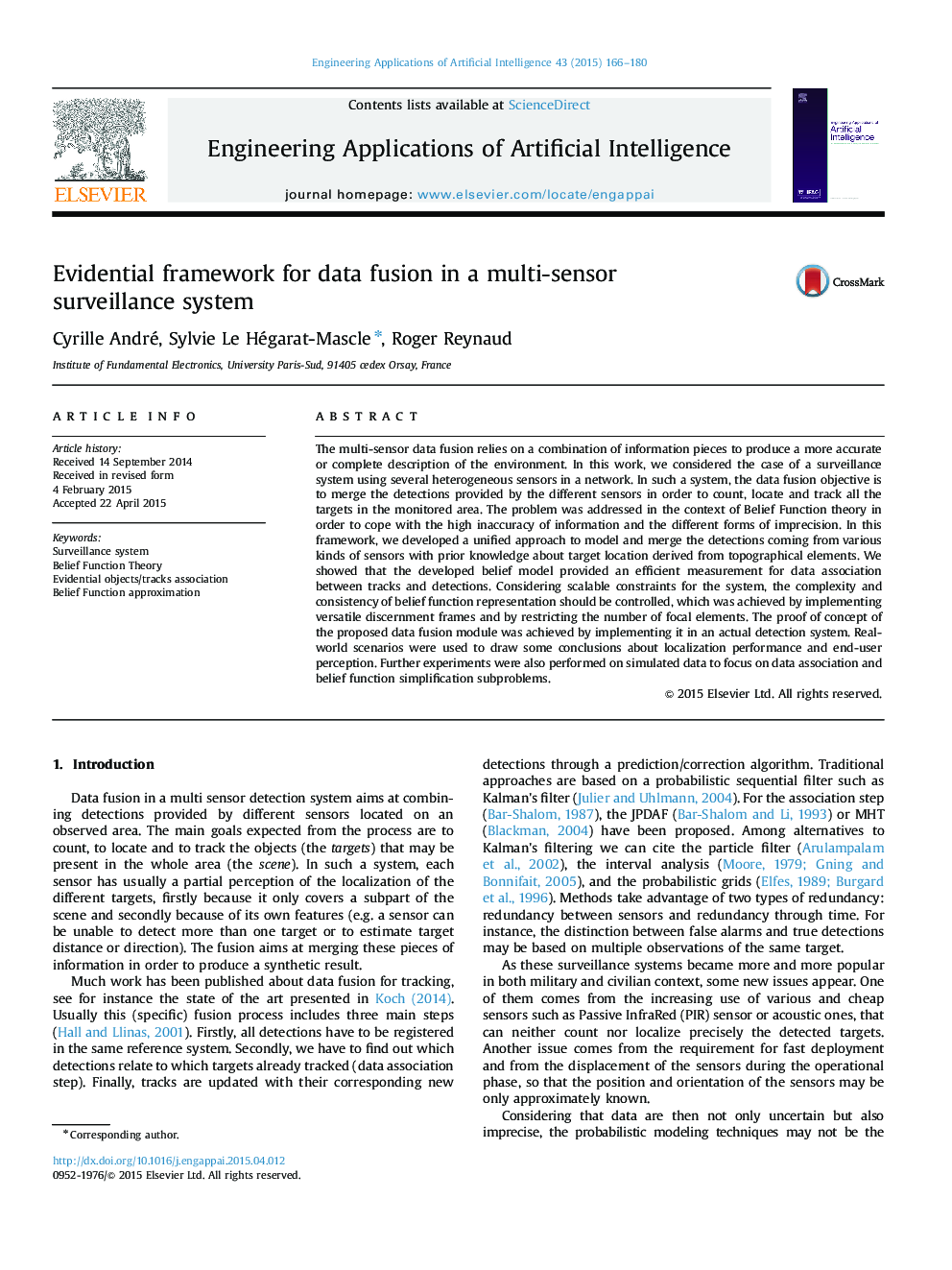| Article ID | Journal | Published Year | Pages | File Type |
|---|---|---|---|---|
| 380310 | Engineering Applications of Artificial Intelligence | 2015 | 15 Pages |
The multi-sensor data fusion relies on a combination of information pieces to produce a more accurate or complete description of the environment. In this work, we considered the case of a surveillance system using several heterogeneous sensors in a network. In such a system, the data fusion objective is to merge the detections provided by the different sensors in order to count, locate and track all the targets in the monitored area. The problem was addressed in the context of Belief Function theory in order to cope with the high inaccuracy of information and the different forms of imprecision. In this framework, we developed a unified approach to model and merge the detections coming from various kinds of sensors with prior knowledge about target location derived from topographical elements. We showed that the developed belief model provided an efficient measurement for data association between tracks and detections. Considering scalable constraints for the system, the complexity and consistency of belief function representation should be controlled, which was achieved by implementing versatile discernment frames and by restricting the number of focal elements. The proof of concept of the proposed data fusion module was achieved by implementing it in an actual detection system. Real-world scenarios were used to draw some conclusions about localization performance and end-user perception. Further experiments were also performed on simulated data to focus on data association and belief function simplification subproblems.
